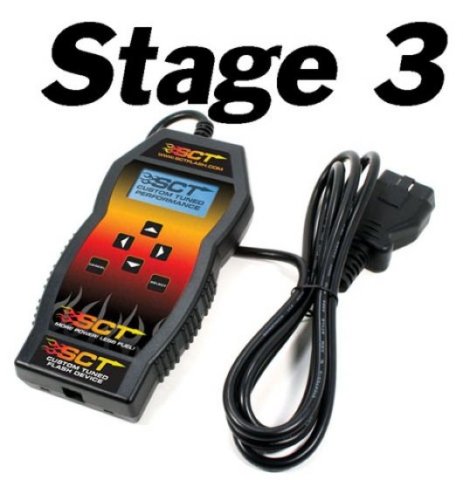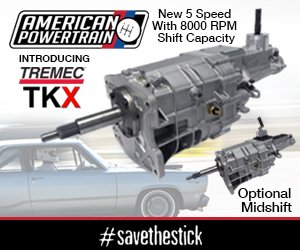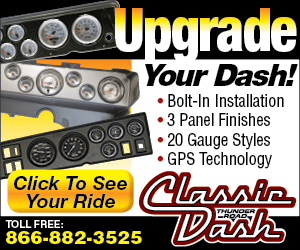A screwdriver and a carburetor kit aren’t much good on a modern engine, so a tuner can be one of the most important and worthwhile performance add-ons. But with such a huge assortment of aftermarket parts available, when does one know if a tuner is required? The Hughes Engines Tech Center explains that the answer mainly revolves around the camshaft, but the build of the vehicle as a whole must be taken into account as well:
The popular Dodge trucks and Jeeps with 3.9L V6, 5.2L V8, and 5.9 V8 Magnum engines have OBD engine management systems. These systems control the fuel and ignition systems. The OBD2 systems are greatly influenced by the vacuum signal (among other things) from the engine. [Also see: Big Tires and Magnum Truck Engines] When the engine vacuum is reduced beyond the capacity of the OBD system, the engine will run poorly.
One of the major contributors to engine vacuum or lack of it is the camshaft. As the size of the camshaft increases, (duration, NOT LIFT) or the lobe separation angle tightens, the vacuum will be reduced. Note that in our cam specs, we list “requires a tuner” on those cams that may reduce the vacuum enough to create a running problem on stock displacement engines.
However, as usual there are exceptions to the rule. The exceptions are when stroker kits are involved. As an engine grows in displacement, it will make a cam act smaller! For example, a cam that might be considered a hot street cam in a 5.2L would work as a towing and RV cam in a 408” stroker. This is because as the displacement grows, the vacuum will not be reduced as much when a larger cam is installed. Therefore, the need for the tuner is somewhat reduced when choosing a cam for a stoker engine.
The question then becomes, “Is the bigger cam worth the added expense of the tuner?”
The tuner can by itself be a performance upgrade. The factory tune in the OBD2 systems is not the best for power, torque, and mileage – like you didn’t already know! And if your vehicle has been retuned at some time in its life for a ‘performance” re-flash at the dealer, commonly known as the “death flash” your horsepower, torque, and mileage will be worse than awful.
In these cases, a tuner can overcome the “death flash” and bring back even more power than the original tune had, without any other engine modifications.
If your need for power exceeds all the above situations, then you do need a tuner. The tuner will allow you to use the factory fuel injection system with the factory management system (computer) with virtually any aftermarket parts you would care to use – cam, heads, strokers, superchargers, etc.
The SCT Tuners we use are the only ones on the market, that we are familiar with, that will do what the SCT can do with the ’96-’03 magnum truck.
When you look at the programmer section of our website, you will see 3 different part numbers. The first one, SCT 3200, is the ideal tuner for engines the bolt-on parts such as throttle bodies, Fi Airgap intakes, cold air systems, and headers. And it will take care of the “death flash” in your computer, which is worth the price of the tuner alone.
The second part number is SCT 3200A. This tuner is the most popular tuner we sell. It will handle anything you want to throw at the OBD2 system still using the factory fuel injection system, short of superchargers, turbos, or nitrous, and then you will need the #3 SCT 3200B Tuner.
Next, we look at the Gen3 Hemis. Here we use the Diablo tuners. The HUG I-1000 tuner has an upgraded program for stock or a lightly upgraded vehicle with no more than a cold air kit or upgraded throttle body. This unit can be upgraded at a later date for an additional charge, over the internet.
The I-1000 CUSTOM is an upgrade to the I-1000. This is a custom program for the owner of an I-1000 who wants to upgrade his engine beyond what the I-1000 is designed for. The I-1000 TUNER is the I-1000/I-1000 CUSTOM combined (for a lower cost) with a custom program for virtually any engine combination possible.
One last note: All tuners are designed to run with at least premium pump gasoline – trying to make a tune for 87 or 89 is a waste of your money.















 Mopar Connection Magazine – The ONLY Daily Mopar Magazine © 2022. All Rights Reserved. Mopar Connection Magazine is the ONLY daily Mopar Magazine bringing you the latest Mopar news, technology, breaking news, and Mopar related events and articles. Find out the latest information about Mopar, Mopar products and services, stay up to date on Mopar enthusiast news, dealership information and the latest Mopar social media buzz! Sign up for the Mopar Connection Magazine newsletter for the latest information about new products, services and industry chatter. Mopar Connection Magazine is the best and only source you need to be a Mopar industry insider!
Mopar Connection Magazine – The ONLY Daily Mopar Magazine © 2022. All Rights Reserved. Mopar Connection Magazine is the ONLY daily Mopar Magazine bringing you the latest Mopar news, technology, breaking news, and Mopar related events and articles. Find out the latest information about Mopar, Mopar products and services, stay up to date on Mopar enthusiast news, dealership information and the latest Mopar social media buzz! Sign up for the Mopar Connection Magazine newsletter for the latest information about new products, services and industry chatter. Mopar Connection Magazine is the best and only source you need to be a Mopar industry insider! by
by